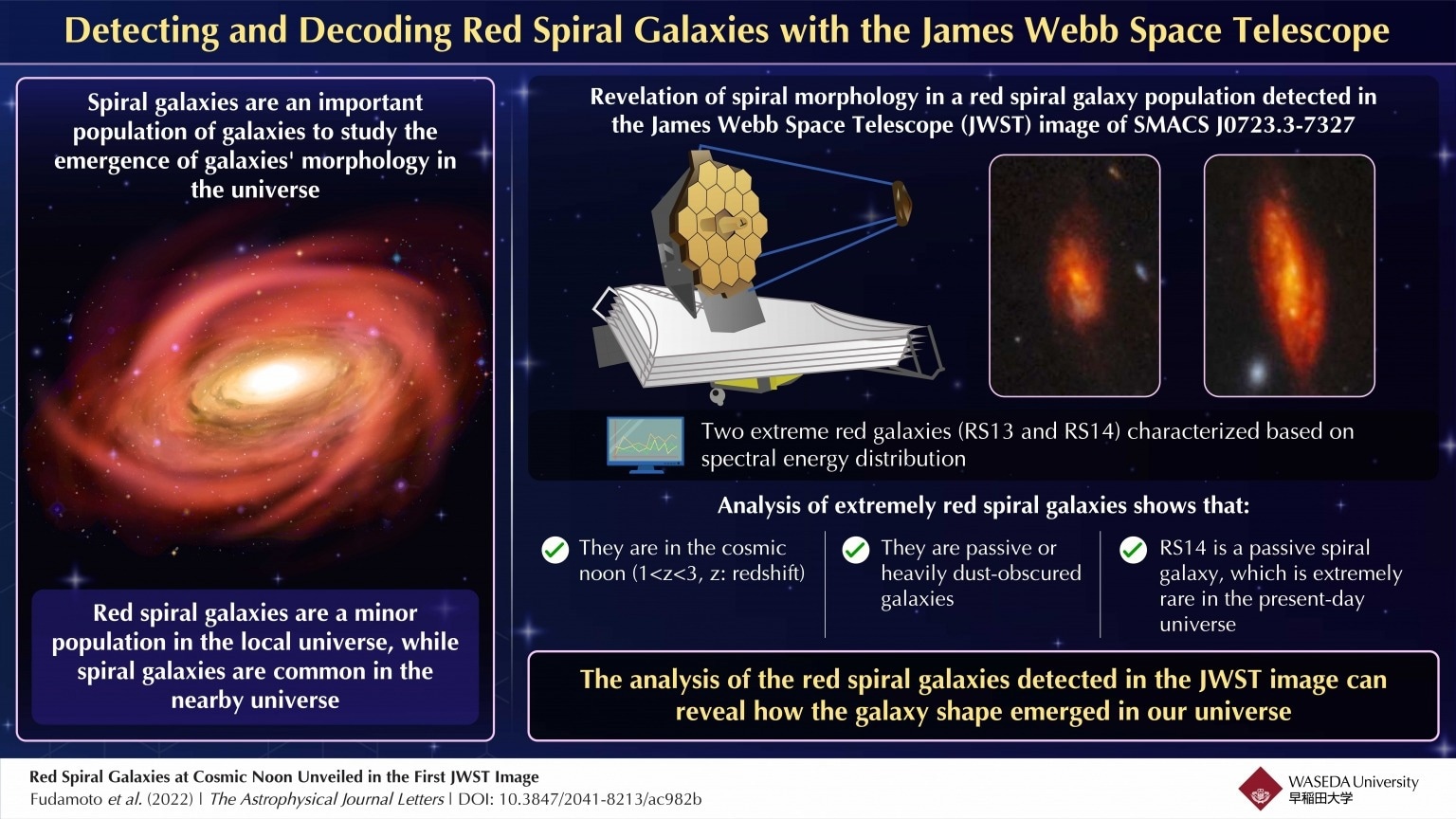The morphology of galaxies contains essential information on the formation and evolution of galaxies. NASA’s James Webb Space Telescope has recorded numerous red spiral galaxies in its first image at exceptional clarity, thanks to its cutting-edge resolution.

Image Credit: Waseda University
Waseda University researchers have recently investigated these galaxies, indicating that they are among the furthest known spiral galaxies to date. Surprisingly, the research discovered a passive red spiral galaxy in the early universe.
Spiral galaxies are one of the universe’s most stunning features. For example, spiral galaxies in the distant universe convey important information about their origin and evolution. However, because these galaxies are too far to investigate in detail, researchers only have a limited comprehension of them.
While these galaxies were already detected among the previous observations using NASA’s Hubble Space Telescope and Spitzer Space Telescope, their limited spatial resolution and/or sensitivity did not allow us to study their detailed shapes and properties.
Yoshinobu Fudamoto, Junior Researcher, Waseda University
The James Webb Space Telescope (JWST) of NASA has pushed things to the next level. JWST captured infrared images of a population of red spiral galaxies at an unparalleled resolution in its initial imaging of the galaxy cluster, SMACS J0723.3-7327, showcasing their morphology in detail!
In light of this, a group of scientists from Waseda University in Japan, including Junior Researcher Yoshinobu Fudamoto, Professor Akio K. Inoue, and Dr. Yuma Sugahara provided unexpected new information on these red spiral galaxies. The study was published in The Astrophysical Journal Letters.
Among the many red spiral galaxies discovered, the researchers concentrated on the two most intensely red galaxies, RS13 and RS14. The researchers assessed the distribution of energy over a wide wavelength range for these galaxies utilizing spectral energy distribution (SED) analysis.
The SED study found that these red spiral galaxies are from the early universe, during the “cosmic noon” (8–10 billion years ago), which occurred after the Big Bang and the “cosmic dawn.” Surprisingly, these are among the furthest known spiral galaxies.
Only 2% of the local universe’s galaxies are rare, red spiral galaxies. This discovery of red spiral galaxies in the early universe, based on a JWST observation that only covered a small percentage of space, shows that such spiral galaxies existed in enormous numbers in the early universe.
The researchers also found that one of the red spiral galaxies, RS14, is a “passive” spiral galaxy (not forming stars), which contradicts the intuitive notion that galaxies in the early universe would be vigorously forming stars. This discovery of a passive spiral galaxy in the JWST's narrow field of view is especially intriguing since it implies that such passive spiral galaxies could exist in great numbers in the early universe.
Ultimately, the results of this research add greatly to our understanding of red spiral galaxies and the universe as a whole.
Our study showed for the first time that passive spiral galaxies could be abundant in the early universe. While this paper is a pilot study about spiral galaxies in the early universe, confirming and expanding upon this study would largely influence our understanding of the formation and evolution of galactic morphologies.
Yoshinobu Fudamoto, Junior Researcher, Waseda University
Journal Reference:
Fudamoto, Y., et al. (2022) Red Spiral Galaxies at Cosmic Noon Unveiled in the First JWST Image. The Astrophysical Journal Letters. doi.org/10.3847/2041-8213/ac982b.